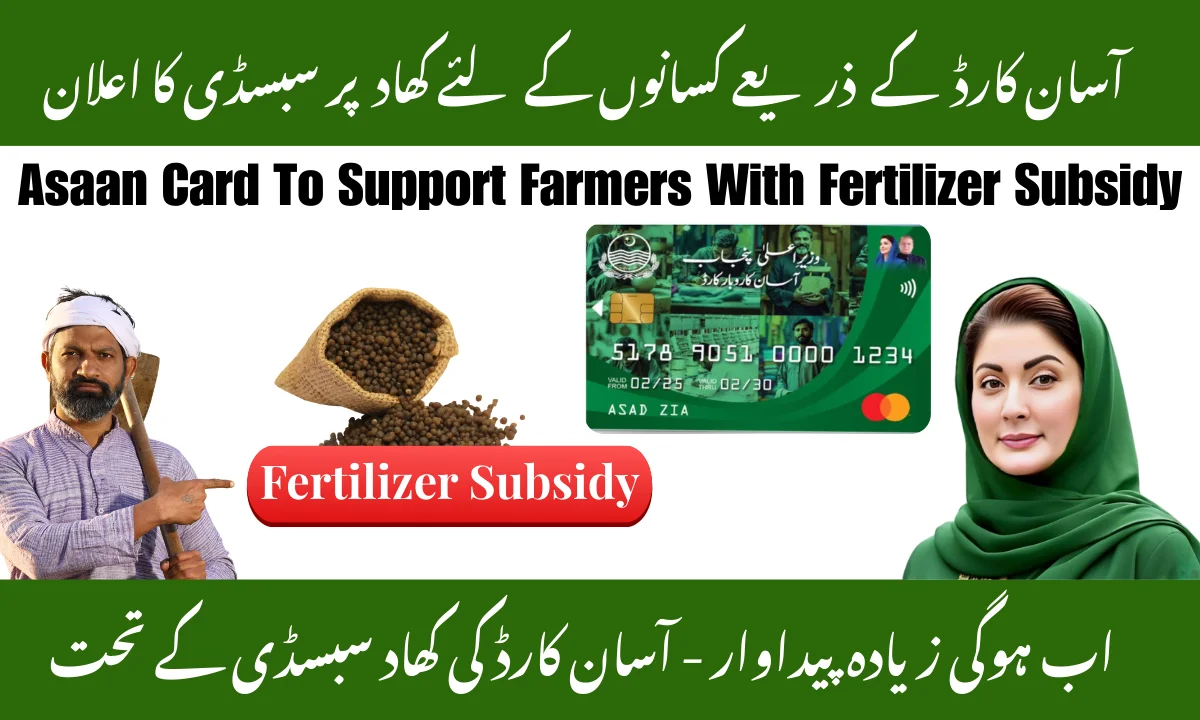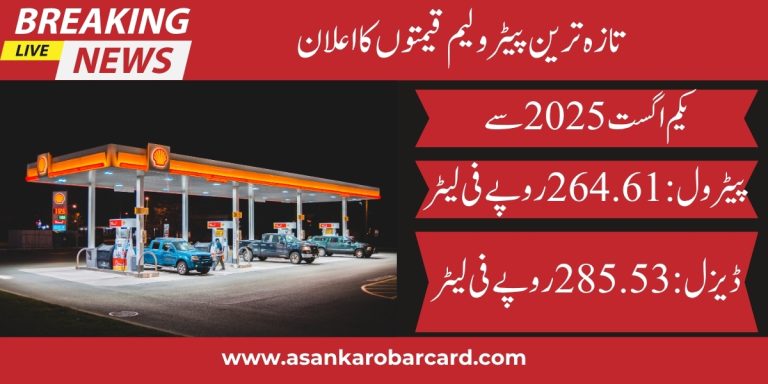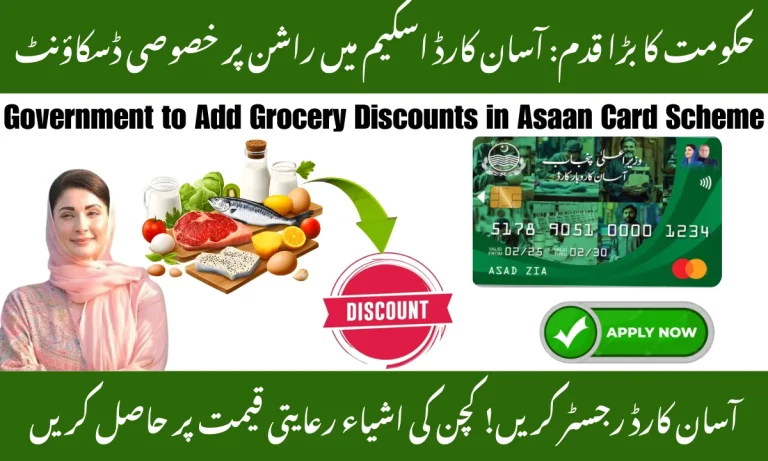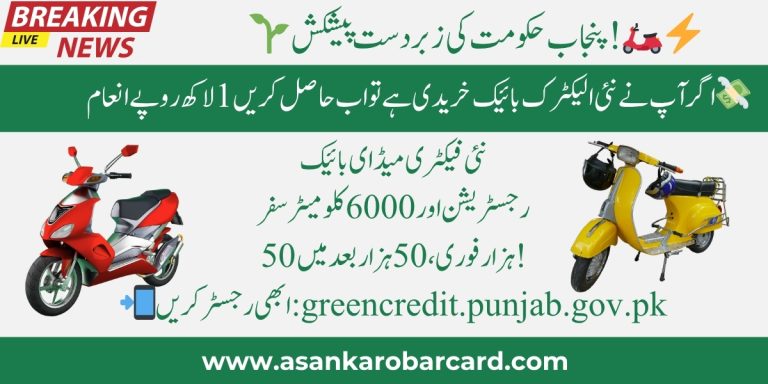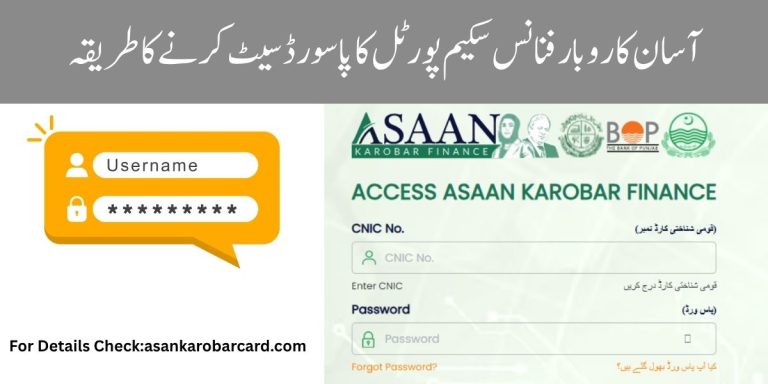Asaan Card to Support Farmers with Fertilizer Subsidy 2025 – Apply Now
Agriculture is the backbone of Pakistan’s economy. More than 60% of the population is directly or indirectly linked to farming, yet farmers often struggle with rising input costs. Among all expenses, the price of fertilizers like urea and DAP has increased sharply in recent years. This has created serious challenges for small farmers, who are already fighting high fuel prices, climate risks, and limited access to loans.
The government of Pakistan has now introduced the Asaan Card to Support Farmers with Fertilizer Subsidy, a scheme designed to reduce the cost burden and improve productivity. With this initiative, farmers will be able to purchase fertilizers at a reduced price, directly using their subsidy-loaded card. The move is expected to bring transparency and financial relief to thousands of families dependent on agriculture.
In the past, subsidy programs faced criticism due to corruption and misuse. Middlemen often absorbed benefits while genuine farmers struggled. The Asaan Card changes this system by linking subsidies directly with the farmer’s CNIC and bank account, ensuring only registered farmers enjoy the benefits.
This article will explain in detail what the Asaan Card scheme is, how farmers can register, the documents required, and the wide range of benefits. It will also highlight how this subsidy support can boost Pakistan’s overall economy and ensure food security.

Key Highlights
| Feature | Details |
|---|---|
| Scheme Name | Asaan Card to Support Farmers with Fertilizer Subsidy |
| Main Benefit | Direct subsidy on urea, DAP, and potash fertilizers |
| Target Group | Small farmers, tenant farmers, rural households |
| Registration Methods | Offline (agriculture office/bank) & Online (portal/app) |
| Transparency | No middlemen, subsidy linked with CNIC & land record |
| Additional Support | Seeds, pesticides, and fuel subsidy (future: loans & insurance) |
What is the Asaan Card Scheme?
The Asaan Card scheme is a government initiative designed to provide subsidies for fertilizers and other agricultural inputs in an easy and transparent way. The card is linked with the farmer’s identity and land records. It ensures that only verified farmers receive benefits.
This subsidy distribution method is supported by the State Bank of Pakistan in collaboration with provincial agriculture departments and commercial banks. Farmers will be able to use this card just like an ATM or debit card at registered dealers.
The scheme mainly targets:
- Small farmers with limited landholdings.
- Tenant farmers who cultivate land owned by others
- Rural households engaged in farming activities.
By introducing digital systems, the Asaan Card is also pushing financial inclusion for rural communities who previously had little access to banking.
Background: Why Fertilizer Subsidy is Essential for Farmers
Fertilizer plays a crucial role in agriculture. Without the right nutrients, crops like wheat, rice, and cotton fail to deliver good yields. Unfortunately, fertilizer prices in Pakistan are influenced by international markets, energy costs, and local shortages.
For small farmers who cultivate 2–5 acres of land, even a small increase in urea or DAP prices means huge losses. They either buy less fertilizer, which results in low yield, or borrow money at high interest rates. Both situations keep them trapped in poverty.
That’s why a structured and transparent fertilizer subsidy system is not just farmer support, but a national need. With the Asaan Card fertilizer subsidy program, farmers will get financial relief, better access to agricultural inputs, and an opportunity to improve their livelihoods.
How Fertilizer Subsidy Works Through Asaan Card
The subsidy mechanism is simple but effective. Once a farmer is registered, the government transfers subsidy amounts directly into their Asaan Card. When they purchase fertilizer from a registered dealer, they pay the reduced price.
For example, if a bag of urea costs Rs. 4,000 and the government provides a Rs. 1,000 subsidy, the farmer will pay only Rs. 3,000 using the Asaan Card. The dealer receives the balance amount from the government. This process ensures:
- No corruption or leakage since money doesn’t pass through middlemen.
- Fair distribution because only registered farmers can use the card.
- Easy tracking of fertilizer purchases through POS machines.
This transparent approach is what makes the Asaan Card a reliable tool for both farmers and policymakers.
Eligibility Criteria for Farmers
Not every farmer automatically qualifies for this subsidy. The government has set clear eligibility requirements:
- Must be a Pakistani citizen with a valid CNIC.
- Should be a registered farmer in the local agriculture office.
- Landholding size should fall under the defined limit (small to medium farmers).
- Tenant farmers can also apply with tenancy documents.
- Priority is given to wheat, rice, and cotton growers as these are staple crops.
This ensures that the subsidy reaches the right people who actually cultivate crops.
Required Documents for Asaan Card Registration
- CNIC copy.
- Land ownership papers or tenancy agreement.
- Passport-size photographs.
- Contact details (mobile number, address).
- Bank account details (if required for subsidy transfer).
Registration Process for Asaan Card
Getting registered for the Asaan Card is simple. The government has made two options available: offline registration and online registration.
Method 1: Offline Registration
- Visit your nearest agriculture office or designated bank branch.
- Collect and fill the Asaan Card application form.
- Attach required documents (CNIC copy, land record, tenancy agreement if applicable).
- Submit the form to the officer.
- Once verified, you will receive your Asaan Card.
This method is useful for farmers in rural areas who may not have internet access.
Method 2: Online Registration
- Visit the official agriculture portal or download the mobile app (if available).
- Enter CNIC, mobile number, and farming details.
- Upload scanned copies of land record and documents.
- Submit the form and receive a tracking ID.
- After approval, the card will be issued and can be collected from the nearest bank.
This digital registration ensures speed and convenience for farmers with internet access.
Verification Process of Asaan Card Applications
- Land record verification from the revenue department.
- CNIC cross-checking with NADRA.
- Verification of farming activity by the local agriculture office.
- Approval followed by card issuance.
This ensures only genuine farmers receive subsidies.
Types of Subsidies Available with Asaan Card
The scheme is not limited to fertilizers. The Asaan Card covers:
- Fertilizer Subsidy – Urea, DAP, potash.
- Seeds Subsidy – Quality certified seeds at reduced cost.
- Pesticides Subsidy – To control crop diseases.
- Fuel Support – Assistance for tube wells and tractors.
- Future Additions – Microcredit loans, crop insurance, equipment leasing.
This makes the card a complete support package for farmers.
Benefits of Asaan Card for Farmers
| Benefit | Explanation |
| Reduced fertilizer cost | Farmers pay less for urea and DAP. |
| Easy access to subsidy | Directly available through card. |
| Transparency | Removes corruption and misuse. |
| No middlemen | Benefits reach only real farmers. |
| Government link | Direct connection with the subsidy system. |
| Better crop yield | More fertilizer use = higher production. |
| Food security | More wheat, rice, and cotton production. |
| Rural economy boost | More income for farming families. |
| Digital inclusion | Farmers get access to banking. |
| Tenant farmer support | Tenants are also eligible. |
| Timely fertilizer supply | Avoids shortage problems. |
| Youth encouragement | Young farmers see farming as profitable. |
| Higher family income | More yield = more earnings. |
| Rural development | Improves overall village economy. |
| Contribution to GDP | Strengthens national economy. |
Impact on Pakistan’s Agriculture and Economy
The introduction of the Asaan Card is expected to transform agriculture in multiple ways, especially for small and medium farmers who form the backbone of Pakistan’s food supply chain. By directly reducing fertilizer costs, it ensures that farmers can apply the right amount of nutrients to their crops, leading to higher yields and better-quality produce. When crops like wheat, rice, cotton, and sugarcane grow in abundance, the entire nation benefits through stable food supply and lower market prices.
Another significant impact is on food security. Pakistan often faces shortages of wheat and edible oil, which pushes the government to import at high costs. With the Asaan Card fertilizer subsidy, local production will rise, reducing reliance on imports and saving precious foreign exchange reserves. This saving can then be invested in other sectors like health, education, and infrastructure.
The rural economy will also see a major boost. When farmers earn more from their crops, they spend more in local markets, creating a cycle of income and employment. Village-level businesses such as seed shops, tractor workshops, and transport services will also grow. With better income, rural families can afford to educate their children, access healthcare, and invest in better farming equipment.
On a national scale, agriculture contributes nearly 20% to Pakistan’s GDP. An increase in production means stronger GDP growth, stable exports, and improved economic stability. Cotton and rice exports in particular can earn valuable foreign exchange, strengthening the country’s trade balance. By empowering farmers with financial inclusion through Asaan Card, the government is not only improving agriculture but also laying the foundation for long-term economic sustainability.
How Farmers Can Maximize Benefits of Asaan Card
While the government is providing the subsidy through the Asaan Card, farmers also need to play their role to make the most out of it. The first step is early registration. Many farmers delay the process and end up missing the subsidy window during sowing season. Registering early ensures that the card is active when they need fertilizers the most.
Farmers must also ensure they purchase fertilizers only from registered dealers. Buying from unregistered sources may not qualify for subsidy claims, and sometimes low-quality fertilizers are sold in the open market. By sticking to authorized sellers, farmers get both subsidy benefits and guaranteed quality products.
Another important tip is to use the subsidy wisely. Some farmers in the past sold subsidized fertilizers for quick cash, which resulted in poor crop yields. The real advantage comes only when the fertilizer is applied properly in the field. Using the subsidy to reduce production cost and increase output will always bring better long-term gains.
Staying updated with government announcements is equally important. Subsidy rates, eligible fertilizers, and registration deadlines may change from season to season. Farmers should remain in contact with agriculture offices, helplines, and SMS alert services to avoid missing out on any new opportunity.
Finally, farmers should combine this financial support with modern farming practices such as balanced fertilizer application, crop rotation, and mechanized farming. Using high-quality seeds along with subsidized fertilizers can double productivity. Farmers who adopt better water management, pest control, and soil testing will benefit even more from the Asaan Card.
By following these steps, the subsidy support will not only reduce costs but also turn farming into a more profitable and sustainable livelihood.
Government Helpline for Asaan Card Farmers Support
To help farmers, the government has set up:
- Toll-free helplines through agriculture departments.
- Complaint centers at local offices.
- SMS services for subsidy updates.
- Bank helplines for card-related issues.
Farmers facing difficulties can directly contact these support channels for quick solutions.
Conclusion
The Asaan Card to Support Farmers with Fertilizer Subsidy is a breakthrough initiative for Pakistan’s agriculture sector. By directly linking subsidies with farmers, the scheme ensures fairness, transparency, and ease of use. With reduced fertilizer costs, improved yields, and digital financial inclusion, this card has the potential to uplift millions of farming families.
Farmers are encouraged to register on time, keep their documents ready, and use the subsidy wisely. In the long run, the Asaan Card will not only support farmers but also strengthen Pakistan’s food security and economy.

This initiative is more than just a financial aid program , it is a step toward modernizing Pakistan’s agricultural system. By combining digital solutions with farmer support, the government is building trust, reducing corruption, and ensuring that only genuine farmers benefit. Such efforts not only secure present-day food supplies but also lay the groundwork for sustainable farming practices in the future.
If implemented consistently and expanded further, the Asaan Card can become a model of agricultural subsidy distribution for other developing nations. With the active involvement of farmers, policymakers, and local communities, Pakistan can take a big leap towards self-sufficiency, stronger exports, and an empowered rural economy.
Frequently Asked Questions
Q1: What is the Asaan Card and how is it different from the Kisan Card?
A: Asaan Card focuses mainly on fertilizer and input subsidies, while Kisan Card is broader, covering loans and other facilities.
Q2: Which fertilizers are covered?
A: Urea, DAP, and potash are included.
Q3: How much subsidy is offered per acre?
A: It depends on crop type and government budget, usually fixed per bag.
Q4: Can tenant farmers apply?
A: Yes, with tenancy proof.
Q5: Is the card usable outside fertilizer purchase?
A: Currently no, it is restricted to registered agricultural inputs.

